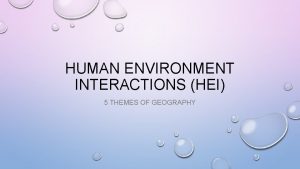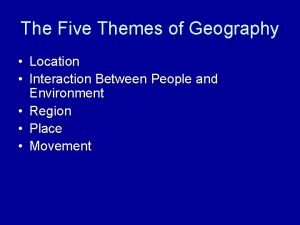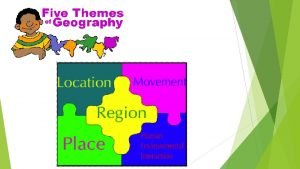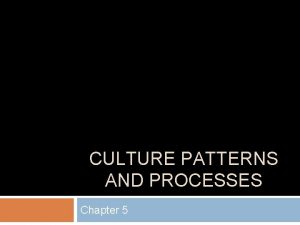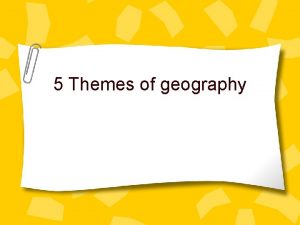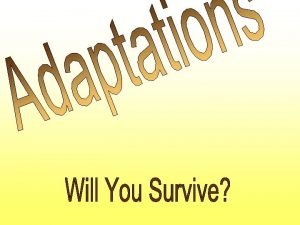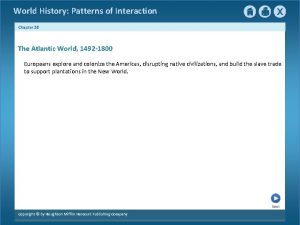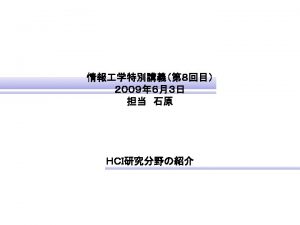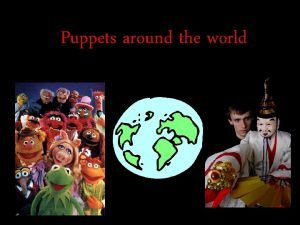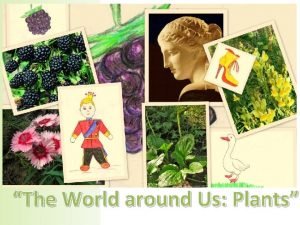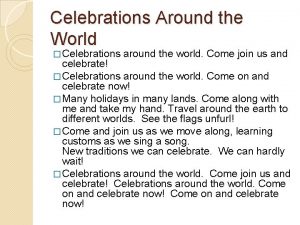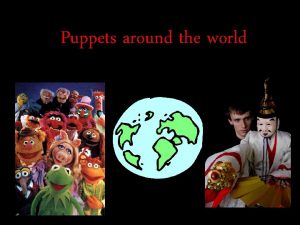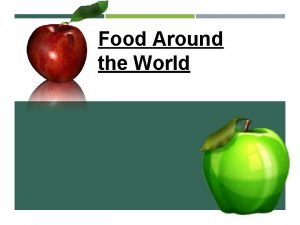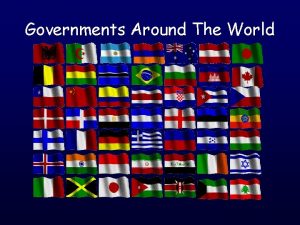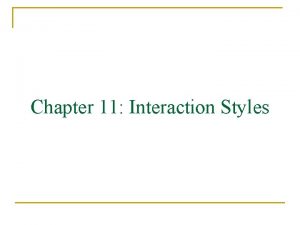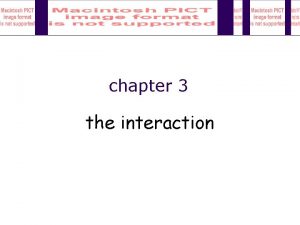Human Environment Interaction Around the World Human Environment
















- Slides: 16

Human Environment & Interaction Around the World

Human Environment and Interaction is how people adapt to, depend on, and modify their environment.

Human impact on the environment can be explained in two important ways. 1. How humans have adapted to and modify (change) their environment to survive and make life more comfortable and convenient. 2. The second is the effect that these changes and adaptations have on the environment. Changes and Adaptations

Humans have made many changes to their geographical situations to better suit their needs and wants. Most of these changes/adaptations have had a positive impact on the lives of humans, but were not necessarily good for the environment. Changes and Adaptations

Changes and Adaptations

Irrigation systems bring water from nearby sources, often rivers, to areas where crops are grown. Early civilizations such as those in Egypt and China used irrigation systems to grow more food, enabling them to expand grow. In modern times, more advanced irrigation systems have been developed to grow crops in areas once thought barren.

Terrace Farming Terrace farming involves cutting out flat areas (terraces) into near vertical slopes to allow farming. Terrace farms appears as steps cut into a mountainside. This adaptation allowed the early Chinese, Japanese and the Inca of Mesoamerica to grow enough food for their large populations. .

Roads The development of roads allowed civilizations to exchange goods and services with other cultures as well as invade and conquer. The Roman and Incan Empires built elaborate road systems throughout their empires. These roads allowed them to maintain good communication and establish a strong, centralized government. Today, the various systems of roads that crisscross most of the continents of the world continue to allow for good communication, trade, and cultural diffusion.

Canals are man made waterways used for trade and transportation. The early Chinese civilization built an extensive canal network that allowed them to trade and communicate with most of their population. In modern times, canals such as the Suez Canal linking the Red Sea to the Mediterranean Sea, and the Panama Canal linking the Atlantic and Pacific Oceans, have contributed heavily to global trade and communication.

EFFECTS ON THE ENVIRONMENT

Pollution is the contamination of the environment by human acts. Pollution is harmful to all living things and can take many forms including, air pollution from the burning of fossil fuels, and water and soil pollution form the dumping of waste products and the use of chemical fertilizers and pesticides. Pollution has caused health problems in humans including respiratory disease and different forms of cancer. Pollution is also responsible for destroying various animals, plants, and insects as it destroys their natural habitat.

Ozone Layer The Ozone Layer is the upper portion of the Earth's atmosphere that screens out most of the Sun's harmful ultraviolet radiation. Recent science has suggested that industrial air pollutants such as chlorofluorocarbon, has damaged the ozone layer by creating a hole in it. Through this hole, damaging UV radiation penetrates to the Earth's surface. Increased exposure to this radiation cause skin cancer in humans, damage crops, and destroy the marine ecology. Many nations around the world have ceased using CFCs in the production of industrial materials.

Deforestation is the widespread destruction of the world's forests. One of the largest areas of destruction is the tropical rainforests. These forests are cut down for the hardwood lumber, to clear space for farming, for building settlements, and for grazing animals. The effects of this destruction include a change in weather patterns, continued buildup of CO 2, a greenhouse gas, and extinction of plants and animals, which will result in the destruction of entire ecosystems. Many worldwide organizations are attempting to stop deforestation, but as most of it occurs in developing nations dependent on the financial revenues from such destruction, stopping it is very hard.

Global Warming is the rising of the average temperature worldwide. Scientist are concerned about this because of the potential destructive effects of this phenomena. Global warming, if it continues, will reach a point where the arctic glaciers begin to melt, causing worldwide floods. Scientists believe global warming is caused by the greenhouse effect, which is a build up of warm air in the lower atmosphere. This occurs from the use of CFCs, the burning of fossil fuels, and deforestation. many countries around the world have been working to limit these destructive forces.

Desertification is the process of fertile land being transformed into desert land. This is generally resulting from human interaction either by deforestation or by the over grazing of farm animals. As the plant life is destroyed, winds blow the fertile soil away, thus spreading the desert. The Sahara Desert in Africa is spreading about 50 miles a year due to this process. In North Africa, where this problem is most prevalent, attempts to halt desertification include reducing the use of the threatened land improved irrigation systems.

With your Group…. Write the definitions in your own words. Complete positive and negative chart on back …. . Whatever not done needs to tonight be finished
 Human environment interaction definition geography
Human environment interaction definition geography Human environment interaction in portland oregon
Human environment interaction in portland oregon Place human characteristics
Place human characteristics Human environment interaction
Human environment interaction What is a functional region
What is a functional region Human environment interaction def
Human environment interaction def Rome human environment interaction
Rome human environment interaction كما تدين تدان english
كما تدين تدان english Goes around comes around meaning
Goes around comes around meaning Gene environment interaction
Gene environment interaction Everything which surrounds us referred as
Everything which surrounds us referred as World history patterns of interaction
World history patterns of interaction Chapter 20 section 1 world history
Chapter 20 section 1 world history The golden age chapter 18
The golden age chapter 18 World history patterns of interaction
World history patterns of interaction Weird restaurants around the world
Weird restaurants around the world School calendars around the world
School calendars around the world
